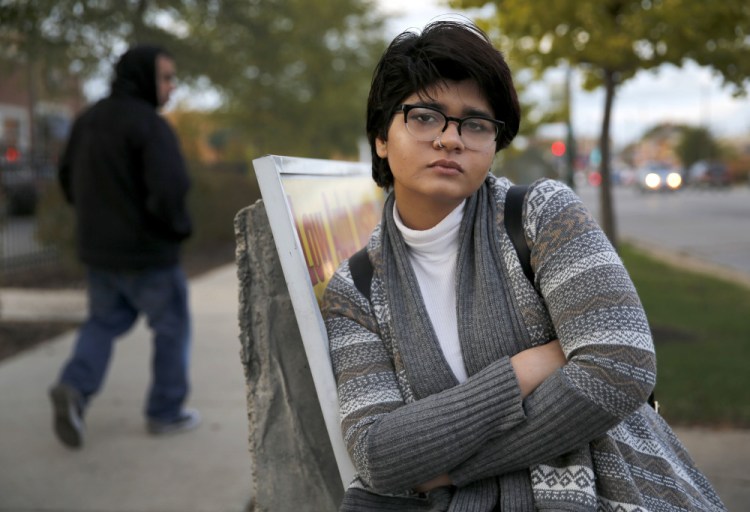CHICAGO — Maryland students using their shirts to spell a racial slur used against black people at a rally. Pennsylvania students posing with swastika-carved pumpkins. A Montana student photographed with a gun accompanied with a racial epithet.
Racial incidents are appearing to pop up at an alarming rate in the nation’s public schools. There were roughly 80 incidents in October alone, by one expert’s count, including a Chicago-area student who was charged with a hate crime for racially charged posts on social media.
Many educators note a spike anecdotally, and social media can give such incidents wider and faster exposure. But it’s far trickier to assess whether there’s an increase numerically, with no organization or agency consistently tracking the issue over time.
School officials acknowledge the incidents are more visible and brazen, fueled by a polarizing presidential administration, divided public and “meme culture.” As a result, schools have responded more publicly and intensely than before.
“You have to be aware of it. You have to monitor it. You have to prevent it from escalating,” said Dan Domenech, head of the School Superintendents Association, who believes there is a spike this year.
Studies surveying schools and teachers during the 2016 presidential campaign noted an increase in anxiety and fear. Many traced it to fiery comments that then-Republican candidate Donald Trump made about immigrants, African Americans and Muslims.
A study released last month by the University of California in Los Angeles showed a surge in teachers reporting student anxiety, from roughly 7 percent in past years to 51 percent this year. It also showed nearly 28 percent of teachers reporting a spike in students making derogatory remarks about other groups during class discussions.
And high-profile incidents such as the white supremacist rally in Charlottesville, Virginia, that turned violent and the spate of police shootings of blacks and other minorities can accelerate racially charged reactions.
Teaching Tolerance, an anti-hate program, used to get requests from schools once a month for help. But since the election it’s been daily, according to Maureen Costello, who runs the Southern Poverty Law Center program.
She started tracking incidents through news media accounts at the start of October after there seemed to be a rise. Part of the explanation for the recent spate, she said, could be the homecoming season. Students become more settled in school and start attending events such as pep rallies and dress-up days.
Administrators and teachers, once reluctant to discuss incidents over privacy concerns, are being more proactive, Costello said. They’re beefing up curriculums and training staff for difficult conversations.
“Schools are looking for professional development. They’re looking for interventions,” she said. “There’s a sense of just really not knowing quite what to do.”
Social studies teacher Terry Jess in Bellevue, Washington, said he’s had to be more vigilant this year in reminding students about classroom rules on appropriate language and listening even when there’s disagreement. He also keeps closer tabs on Snapchat and Twitter to watch for incidents.
“It has gotten where there seems to be a lack of decorum and respect … as far as what we’re seeing from our political candidates, what students are seeing on social media,” he said. “That has started to creep in our hallways.”
In the past few weeks shows, schools have taken steps like forfeiting football games – one school canceled the rest of the season – and investigating and disciplining offenders.
Chicago high school senior Hira Zeeshan, a Pakistani Muslim immigrant, said one of the hardest days for her was after Charlottesville. “It was really disturbing the way people were just able to walk out on the street and show all this hatred and use Nazi symbols,” she said.
“We just resumed our day like it was normal.”
Send questions/comments to the editors.



Success. Please wait for the page to reload. If the page does not reload within 5 seconds, please refresh the page.
Enter your email and password to access comments.
Hi, to comment on stories you must . This profile is in addition to your subscription and website login.
Already have a commenting profile? .
Invalid username/password.
Please check your email to confirm and complete your registration.
Only subscribers are eligible to post comments. Please subscribe or login first for digital access. Here’s why.
Use the form below to reset your password. When you've submitted your account email, we will send an email with a reset code.